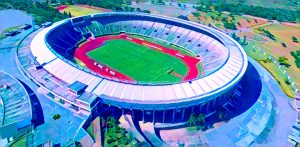KEY POINTS
- Renovated stadiums like Harare’s National Sports Stadium position Zimbabwe as a hub for international sporting events and boost local tourism revenues.
- Improved training facilities enhance athlete performance, nurture grassroots sports talent and foster national pride across communities.
- Public-private partnerships can modernize Zimbabwe’s sports infrastructure, driving job creation, economic growth, and regional sports tourism.
Zimbabwe boasts a vibrant sports culture with potential spanning cricket, soccer, rugby, and athletics.
However, the lack of modern infrastructure impedes growth in these sectors.
Globally, countries leverage sports infrastructure for economic stimulation, talent development, and community enrichment, and Zimbabwe stands poised to do the same.
Investing in modern, sustainable sports facilities could transform Zimbabwe into a competitive force on the world stage while delivering significant economic and social dividends.
From job creation to fostering national pride, the case for prioritizing sports infrastructure development is compelling and urgent.
Current state of Zimbabwe’s sports infrastructure
Zimbabwe’s sports infrastructure tells a story of underinvestment and unrealized potential. Key facilities like the National Sports Stadium in Harare, Barbourfields Stadium in Bulawayo, and other regional venues have suffered from years of inadequate funding and maintenance.
Many facilities fall short of international standards, limiting Zimbabwe’s ability to host global events or develop elite athletes.

Revamping Zimbabwe’s sports infrastructure for growth
For instance, Zimbabwe’s most iconic facility, the National Sports Stadium, requires extensive renovations to meet FIFA and CAF requirements.
Smaller venues, often underutilized or dilapidated, hinder grassroots sports. These challenges are compounded by financial constraints, policy gaps, and a lack of public-private partnerships needed to modernize the sector.
Opportunities for investment in sports infrastructure
Zimbabwe’s sports sector presents untapped opportunities for investment. Public-private partnerships can play a pivotal role in bridging resource gaps, enabling the construction and renovation of world-class facilities.
The government’s growing commitment to infrastructure development, highlighted in Vision 2030, sets a framework for collaboration.
Investing in sports infrastructure offers measurable benefits. Modern stadiums and arenas attract international competitions, generating revenue and boosting tourism.

National Sports stadium in Zimbabwe
Training facilities improve athlete performance, creating opportunities for Zimbabwean talent to compete internationally.
With the rising popularity of sports tourism, Zimbabwe has the potential to become a regional hub, hosting major tournaments and drawing fans from across Africa and beyond.
Achievements
The 2018 renovation of the National Sports Stadium in Harare is a prime example of infrastructure investment’s transformative potential.
Following its refurbishment, the stadium regained its status as a venue for international events, boosting local economies through tourism and event-related activities.
Another success story is the Bulawayo Athletics Club, which upgraded its facilities to include a state-of-the-art track and field setup.

Sport is fostering community and Social change in Zimbabwe
These improvements not only increased membership but also enhanced performance levels among athletes, earning the club recognition as a premier athletics center in Southern Africa. These cases underline how strategic investments can yield substantial returns.
Key sectors for investment
- Stadiums and arenas
Zimbabwe’s urban centers need modern stadiums to host large-scale events. Cities like Harare and Bulawayo could benefit from multifunctional arenas catering to diverse sports and entertainment events.

Zimbabwe’s National sports stadium nears completion
- Training facilities
Grassroots sports development requires accessible, well-equipped training facilities. Investing in gyms, tracks, and sports academies ensures that athletes receive proper preparation from a young age, contributing to sustained national success.
- Sports tourism infrastructure
Zimbabwe’s natural beauty complements its potential as a sports tourism hub. Facilities designed for international tournaments, combined with leisure tourism, could attract significant global attention and economic gains.
Sports infrastructure investment offers Zimbabwe a unique avenue for growth and development.
By prioritizing public-private partnerships and embracing sustainable models, the nation can unlock opportunities to transform its sports landscape.
Modern facilities would empower athletes, attract international events, and position Zimbabwe as a leader in sports tourism.
With strategic planning and commitment, Zimbabwe’s vision for a vibrant sports sector can become a reality, fostering national pride and economic prosperity while showcasing the country’s immense potential on the global stage.


